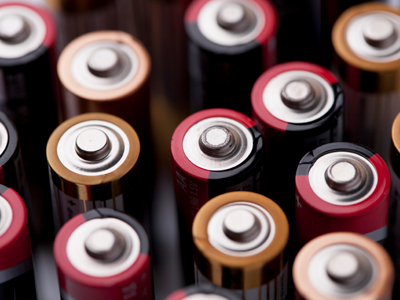Electricity is a major topic in GCSE Physics. In this quiz we look at household or domestic electricity which is used to power the many appliances around the home.
Washing machines and vacuum cleaners are two of many devices that we take for granted. Without these, our lives would be very different and household chores would take much longer. Unlike nowadays, in the 1950s, very few married women went out to work. Instead they were expected to look after the husband and children as well as do the housework - they spent about 70 hours a week (that's almost twice the time of the normal working week) cleaning, cooking and shopping. One of the main reasons that this changed is that electrical appliances for the home became more affordable and many new devices were invented, all taking advantage of domestic electricity.
Actually, household electricity is the same as any other electricity - it's just an alternative way of saying electricity in the home. Electricians refer to it as a domestic supply. The first important thing to remember is that it is 230 V. This can deliver a current carrying enough energy to kill you - so knowing about electrical safety in the home is important.
Most household appliances need to be plugged into the mains. In other words, they are connected to one of the wall sockets using a plug. A lot of the plugs have three pins: live, neutral and earth. You have probably wired a plug as part of your KS3 science and may have done it again at GCSE. Hopefully, by now you will have learnt which colour wires should be connected to which pins. If not then find out, as you are expected to know this for your exam. In practical terms, this is extremely useful as you may need to replace a plug on a household electrical appliance many times during your life.
The earth pin is part of the safety that is built into all household electricity systems. If an electrical fault develops in an appliance, a large current will flow through the earthing system. This will blow the fuse in the plug or, more likely, cause one of the circuit breakers to trip at the consumer unit. The consumer unit is the junction between the wiring inside the house and the outside electricity supply. When a fuse blows or a circuit breaker trips, the electricity to the appliance is cut off, making it safe. Another safety feature of any electrical system is that the wires are coated with plastic to electrically insulate them. Touching a bare wire that is connected to mains electricity is definitely not good for your health!
The electricity supplied to your home is AC, which stands for alternating current. In an alternating current the direction in which the current flows is constantly changing. In the UK it changes 50 times every second, so we say the AC has a frequency of 50 hertz (symbol Hz). This is fine for many electrical appliances, however, it is not OK for others like computers, radios and TVs. These also run off lower voltages so they are fitted with transformers, to reduce the voltage, and rectifier circuits, to change the AC into DC (direct current). Direct current always flows round a circuit in the same direction. Devices that run off rechargeable cells or batteries can be charged from the mains and their chargers also contain the same technology - a transformer and a rectifier.








